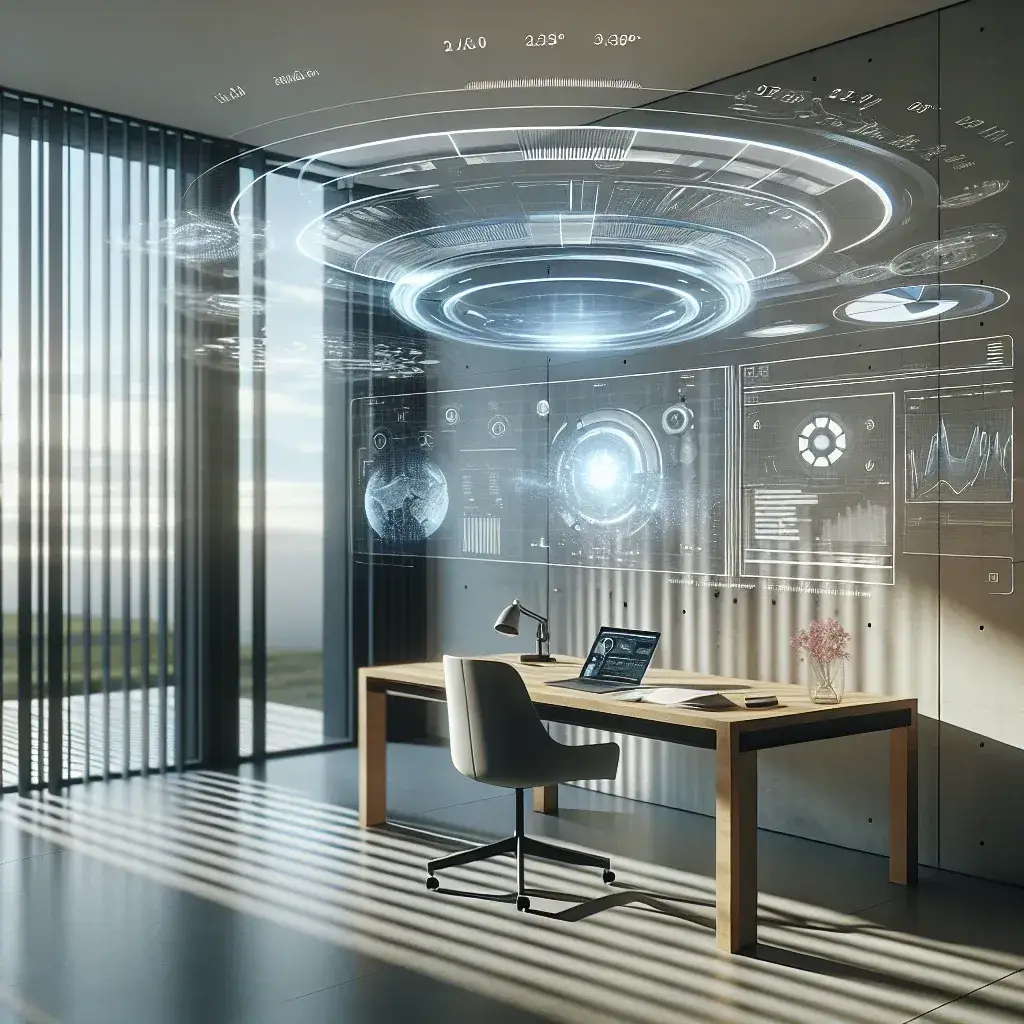Introduction to Home Office 3.0
The landscape of remote work has evolved significantly over the past decade, with the home office becoming an integral part of professional life. As we transition into Home Office 3.0, innovative technologies are reshaping how we interact with our workspaces. Among these advancements, holographic projectors stand out as a game-changer, offering immersive and interactive environments that enhance productivity and streamline workflows.
The Evolution of Home Offices
From basic setups with a desk and a computer, home offices have transformed through various stages. Home Office 1.0 focused on establishing a functional workspace, while Home Office 2.0 integrated ergonomic furniture and high-speed internet. Now, Home Office 3.0 introduces smart technologies like holographic projectors, virtual reality, and advanced communication tools, creating a seamless and efficient work environment.
What Are Holographic Projectors?
Holographic projectors are advanced devices that create three-dimensional images by manipulating light to produce lifelike visuals without the need for special glasses. These projectors can display interactive 3D models, virtual meetings, and real-time data visualizations, making them a valuable asset for modern home offices.
Benefits of Using Holographic Projectors in Your Home Office
- Enhanced Visualization: Holographic projectors allow for detailed 3D representations of data, designs, and concepts, enabling better understanding and decision-making.
- Interactive Collaboration: Virtual meetings become more engaging with holographic avatars, fostering a sense of presence and collaboration among remote teams.
- Space Efficiency: By projecting multiple holograms, you can maximize the use of limited desk space, reducing clutter and enhancing organization.
- Personalized Workspace: Customize your work environment with interactive elements that adapt to your workflow and preferences.
Key Features to Look for in Holographic Projectors
- Resolution and Clarity: Ensure the projector offers high-resolution displays for crisp and clear holograms.
- Interactivity: Look for projectors that support touch or gesture controls to interact with the holographic content seamlessly.
- Connectivity: Compatibility with various devices and platforms is essential for integrating holographic projectors into your existing setup.
- Ease of Setup: Choose projectors that are user-friendly and easy to install, minimizing downtime and setup complexity.
- Scalability: Opt for devices that can grow with your needs, supporting additional features and integrations as required.
Setting Up Your Holographic Home Office
Integrating a holographic projector into your home office involves careful planning and setup:
- Choose the Right Location: Select a space with adequate lighting and room to accommodate the projector’s requirements.
- Ensure Connectivity: Set up a reliable internet connection and compatible devices to support seamless holographic interactions.
- Optimize Lighting: Proper lighting enhances the clarity and visibility of holographic projections, so adjust your workspace lighting accordingly.
- Arrange Your Workspace: Position your holographic projector for optimal visibility and accessibility, ensuring it complements your workflow.
- Test and Calibrate: After setup, test the projector and calibrate settings to achieve the best performance and user experience.
Enhancing Productivity with Holographic Technology
Holographic projectors offer several ways to boost productivity in a home office:
- Virtual Whiteboards: Collaborate on projects in real-time, brainstorming and visualizing ideas without physical constraints.
- 3D Data Analysis: Analyze complex datasets with interactive 3D models, making data interpretation more intuitive.
- Virtual Meetings: Conduct immersive virtual meetings that replicate in-person interactions, enhancing communication and collaboration.
- Task Management: Organize and track tasks with holographic displays that offer dynamic and interactive interfaces.
- Creative Design: Utilize holographic tools for design and innovation, allowing for more creative and flexible project development.
Future Trends in Home Office Technology
The integration of holographic projectors is just the beginning of a technology-driven transformation in home offices. Future trends include:
- Augmented Reality (AR) Integration: Combining holography with AR to create mixed reality workspaces that enhance interaction and functionality.
- Artificial Intelligence (AI) Assistants: AI-driven tools that manage workflows, schedule meetings, and provide intelligent insights.
- Advanced Ergonomics: Smart furniture and devices that adapt to individual user needs, promoting health and comfort.
- Blockchain Security: Enhanced security protocols to protect data and ensure privacy in digital work environments.
- Sustainable Technologies: Eco-friendly devices and energy-efficient solutions that reduce the environmental impact of home offices.
Conclusion
Home Office 3.0 represents the next leap in remote work, offering a blend of advanced technologies that transform how we work from home. Holographic projectors play a pivotal role in this evolution, providing immersive and interactive experiences that enhance productivity, collaboration, and overall work satisfaction. By embracing these innovations, professionals can create dynamic and efficient workspaces that meet the demands of the modern workforce.


Leave a Reply